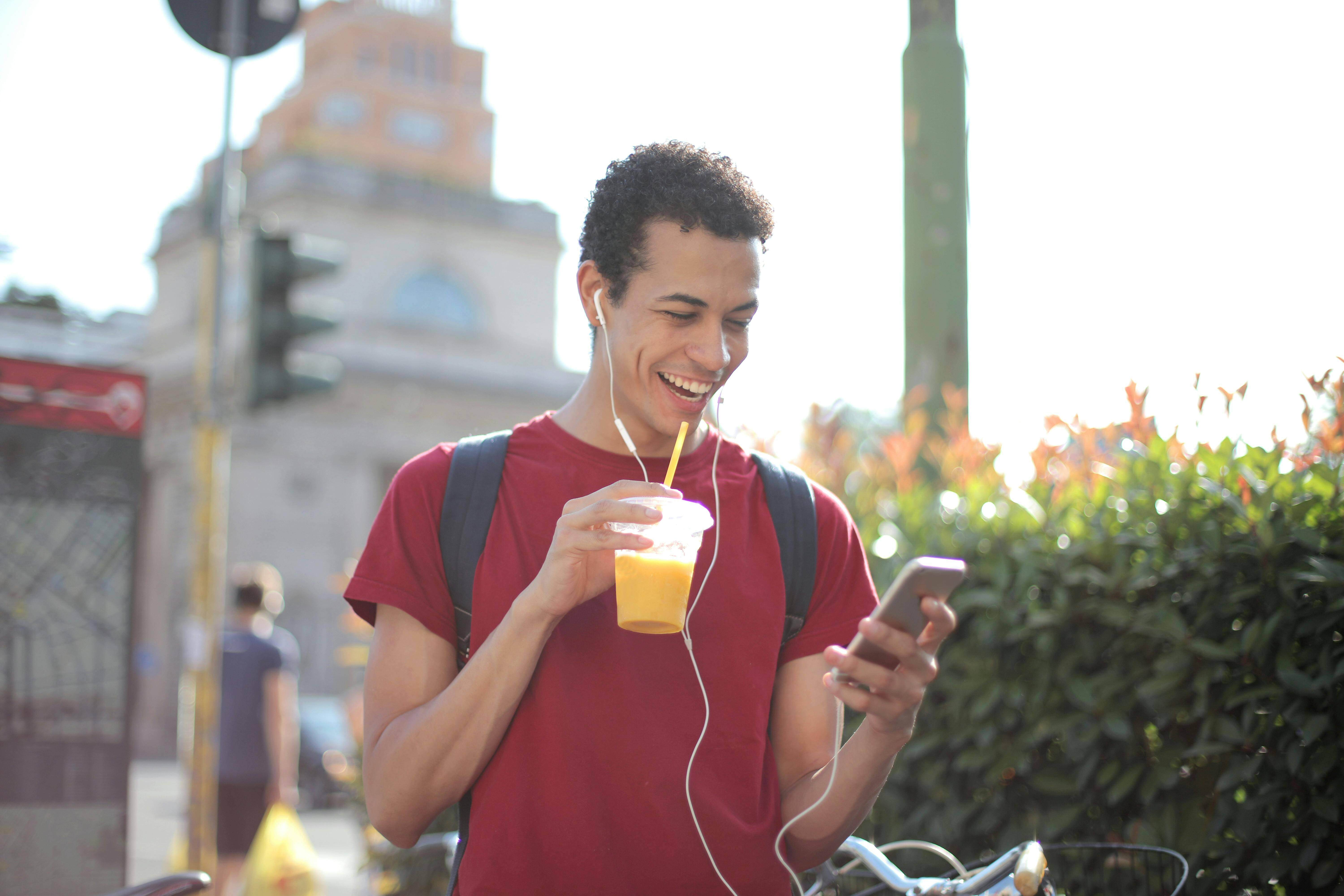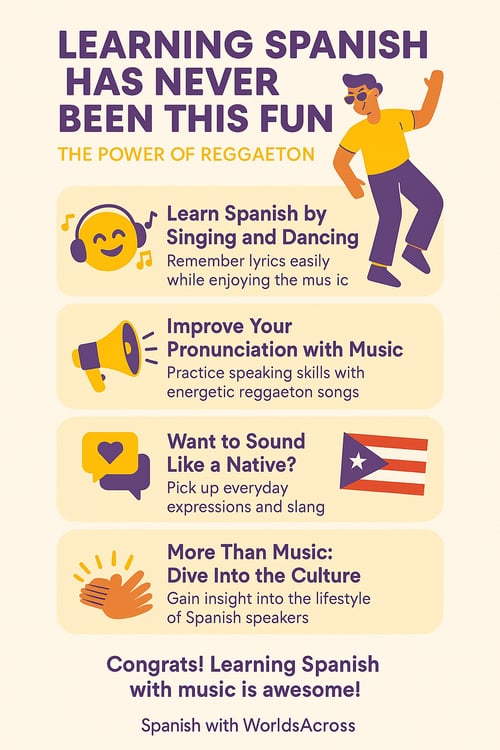How Reggaeton Can Help Improve Your Spanish Skills

Have you ever belted out songs like “Despacito” or “Bichota” at the top of your lungs without fully understanding what you were saying? If so, congratulations! Whether you realized it or not, you were improving your Spanish skills—and the best part is, you were having fun doing it! Reggaetón, beyond being a trendy genre, can become your ideal ally to learn Spanish through music while enjoying its contagious rhythm and unmatched energy.
Join us and discover how this vibrant musical genre can expand your vocabulary, improve your pronunciation, and immerse you in the richness of Latin culture. Get comfy—let’s dive in!Learn Spanish by Singing and Dancing to the Rhythm of Reggaetón
Music is one of the best ways to learn Spanish. Have you noticed how quickly we can learn the lyrics of a song without even trying? For our brains, remembering catchy melodies and engaging lyrics is much easier than memorizing vocabulary lists and complex grammar rules.
With reggaetón, you’ll be exposed to everyday vocabulary and expressions that are often hard to find in traditional learning methods. Plus, since it's such a popular genre, artists come from many different nationalities—giving you the chance to hear a variety of accents and absorb unique phrases from different countries. So go ahead, learn Spanish through music!
From Beginner to Pro: Improve Your Pronunciation with Music
Singing in another language can be an excellent tool for improving your pronunciation. Reggaetón—with its fast, aggressive style—is great practice for developing speaking skills. Have you ever tried rapping Daddy Yankee’s part in “Despacito”? Give it a shot! It can be a fun experience that helps you loosen your tongue and gain confidence when speaking. Just don’t worry if it’s not perfect at first—with practice and patience, you’ll be mastering any reggaetón song. You’ve got this!

Want to Sound Like a Native? Learn Reggaetón Slang
Another benefit of learning Spanish through music—especially reggaetón—is the chance to pick up common expressions and everyday slang. Here are a few examples:
- Romper la pista: To dance so well that you stand out at the party.
- Tener piquete: A person with “piquete” has a lot of confidence and attitude.
- Vamos al mambo: To take action quickly without wasting time.
- Tamo’ activos: We’re ready and full of energy.
- Frontear: In reggaetón slang, it means to show off—whether it’s money, fame, clothes, cars, etc.
Exploring the Richness of the Puerto Rican Accent
Reggaetón songs don’t just help you understand Spanish in general—they also let you appreciate one of the most interesting variants of the language: the Puerto Rican accent. While reggaetón has welcomed artists from all over the world, we can’t deny that most of its icons are Puerto Rican (like Don Omar, Bad Bunny, Daddy Yankee, and Anuel AA). Each of these artists infuses their lyrics with the uniqueness of Puerto Rican Spanish, offering students of the language a great opportunity to expand their understanding.
-
Goodbye R, Hello L
One of the most interesting features you’ll notice when listening to Puerto Rican singers is how they replace the letter R with L in certain words.
Examples:
- Instead of “cantar,” you’ll hear “cantal.”
- Instead of “tarde,” you’ll hear “talde.”
- Mi pasión es cantal reguetón.
- Vámonos que se está haciendo talde.
-
Dropping Letters
Examples:
- “Para” becomes pa’.
- Hoy salgo pa’ la calle (Today I’m going out to the street).
- No quiero na’ de eso (I don’t want any of that).
- Tamo’ listos (We’re ready).
- Eso es to’ lo que tengo (That’s all I’ve got).
- Chacho, qué calor (“Man, it’s hot”).
Why is this important for Spanish learners?
Understanding and getting used to the R-to-L switch and these contractions will train your ear, as they’re common in both music and casual conversations. Plus, these features help you appreciate the connection between language and the relaxed cultural vibe of Puerto Rican Spanish, which is key to communicating with native speakers in real-life situations. See why listening to reggaetón is one of the best ways to learn Spanish?
More Than Music: Dive Into the Latin Culture of Reggaetón
Learning Spanish through music goes far beyond memorizing vocabulary and grammar rules. It also means immersing yourself in the culture behind those words. Reggaetón is and will continue to be a vital part of pop culture in many Spanish-speaking countries. Listening to it helps you better understand how Latinos express themselves, have fun, and live their everyday lives.
What’s more, the genre’s wide regional variety allows you to become familiar with different accents. Imagine listening to Puerto Rican Bad Bunny’s biggest hits, then switching to Colombian Maluma’s. Now that’s a cultural explosion!
Congrats! Now you know why reggaetón is one of the best ways to learn Spanish. This vibrant genre not only teaches you loads of new vocabulary—it also lets you experience the true lifestyle of Spanish speakers up close. So go ahead, turn up the volume and sing your heart out. Learning Spanish with music has never been so fun!



